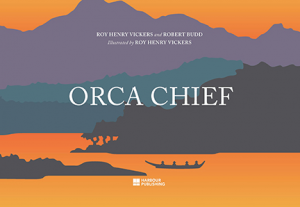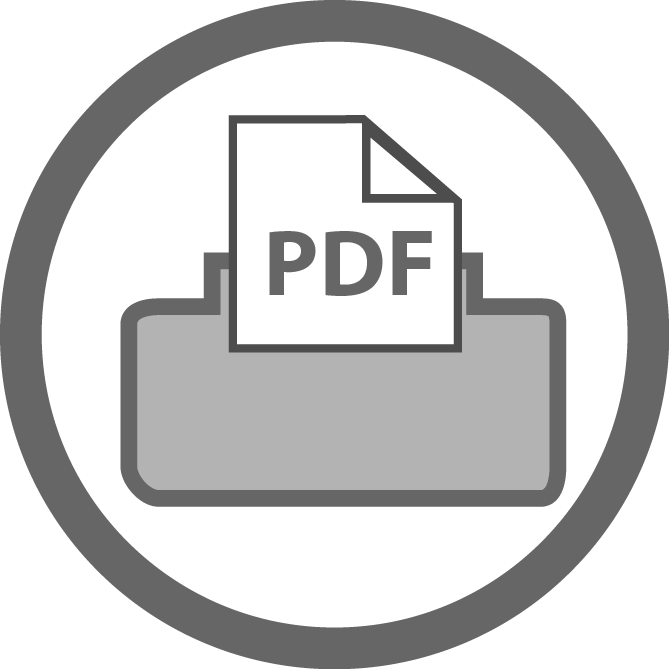 by Roy Henry Vickers & Robert Budd
by Roy Henry Vickers & Robert Budd
Thousands of years ago in the village of Kitkatla, four hunters leave home in the spring to harvest seaweed and sockeye. When they arrive at their fishing grounds, exhaustion makes them lazy and they throw their anchor overboard without care for the marine life or the sea floor. When Orca Chief discovers what the hunters have done, he sends his most powerful orca warriors to bring the men and their boat to his house. The men beg for forgiveness for their ignorance and lack of respect, and the Orca Chief compassionately sends them out with his pod to show them how to sustainably harvest the oceans resources.
Strategies/Skills Used
Reading Strategy 1: Access background knowledge.
Reading Strategy 7: Determine the most important ideas and events and the relationship between them.
Reading Strategy 10: Summarize what has been read.
Reading Strategy 11: Make inferences and draw conclusions.
Writing Skill 6: I choose the tone and point of view that suit my writing purpose.
 TEACHING THE ACTIVITY: PRE-READING
TEACHING THE ACTIVITY: PRE-READING

 (1) In this activity, the students will use authentic texts to identify various perspectives and make inferences about those perspectives in their writing. To begin, Place 11 x 17 size copies of images of Orca Chief illustrations and images of Kitkatla area around classroom along with a Observe-Wonder-Infer Chart under each image.
(1) In this activity, the students will use authentic texts to identify various perspectives and make inferences about those perspectives in their writing. To begin, Place 11 x 17 size copies of images of Orca Chief illustrations and images of Kitkatla area around classroom along with a Observe-Wonder-Infer Chart under each image.
(2) Introduce the OWI Chart and tell students they will be circulating the room to observe their observations then wonders, then inferences about each of the pictures.
(3) Have students begin with observations only. Do not let them rush ahead as more time for observations will often bring out important details. Remind them it is a silent activity and they can only “talk” by writing their thinking on the pictures.
(4) Next, have students move around the room and add “wonders” (questions) about the pictures. When they have had enough time, have them move around and add inferences. Inferences could be answers to their own wonders or the wonders of others or could be general inferences where they are making a connection with the image in front of them and what they already know.
(5) Come together as a class to share some of the observations, wonders, and inferences from each of the charts. Ask small groups to read out the ideas on the sheet closest to them. Provide time for additional discussion and sharing if students have more to add. Save the OWI Charts and pictures to refer to later in the lesson.
 TEACHING THE ACTIVITY: DURING READING
TEACHING THE ACTIVITY: DURING READING
 (6) Hand out Plot Profile – Story Cycle to all students and explain that this is a tool to help them record what they think the most important parts of the story are. They may use words and/or pictures.
(6) Hand out Plot Profile – Story Cycle to all students and explain that this is a tool to help them record what they think the most important parts of the story are. They may use words and/or pictures.
(7) Read the Author’s Note and pose this question to students for them to consider as they move through the lesson: Why did the author include a note to explain to use how he himself learned the story?
(8) Continue to read the story until page 23 at which point pause to allow students time to add detail to their Story Cycle.
(9) Read remainder of story.
 (10) Read story again to students. They can make changes or add detail to their Story Cycle. If possible, have students listen to Roy Henry Vickers read the story.
(10) Read story again to students. They can make changes or add detail to their Story Cycle. If possible, have students listen to Roy Henry Vickers read the story.
 TEACHING THE ACTIVITY: POST-READING (PART ONE)
TEACHING THE ACTIVITY: POST-READING (PART ONE)
(11) Place students into small groups of 5 or 6 students and have them take their individual Story Cycle with them.
(12) Ask the students to work in their small groups to create a new, group Story Cycle using their communication skills to come to consensus about which important parts to include.
(13) Ask students to individually retell the story to each other using their group Story Cycle.
(14) Ask students to work as a group to retell the story to the whole class using their group Story Cycle.
(15) Have students reflect in their reading journals (or other appropriate location) on the similarities and differences of each groups retelling of the story to the whole group.
 TEACHING THE ACTIVITY: POST-READING (PART TWO)
TEACHING THE ACTIVITY: POST-READING (PART TWO)
(16) Ask students to identify the different perspectives present in the Orca Chief (e.g., the fishers, Orca Chief, Rat Fish, the villagers) and list on the board for all students to see.
 (17) Have students choose one of the perspectives listed on the board and use the Orca Chief Perspectives Organizer to write about the story from that point of view. Tell them they will have to make inferences based on what they read in the text and what they already know.
(17) Have students choose one of the perspectives listed on the board and use the Orca Chief Perspectives Organizer to write about the story from that point of view. Tell them they will have to make inferences based on what they read in the text and what they already know.
 (18) Ask students to pair up with another student who wrote from a different perspective and participate in a Tug of War while trading aspects of their specific perspective. Have them do this routine with several different partners.
(18) Ask students to pair up with another student who wrote from a different perspective and participate in a Tug of War while trading aspects of their specific perspective. Have them do this routine with several different partners.
(19) Come back together as a whole class and discuss the various perspectives and the Tug of War activity. Ask students: Did your perspective on the story change based on information you heard from a different perspective during the Tug of War? When else would it be important to consider various perspectives about using natural resources? What does this story teach us about interconnectedness? Ask student to think back to the During Reading activity question “Why did the author include a note to explain to use how he himself learned the story?”
(20) Bring out the OWI Charts and images from the pre-reading activity and have students add additional details or inferences to the charts.
 TEACHING THE ACTIVITY: POST-READING EXTENSION
TEACHING THE ACTIVITY: POST-READING EXTENSION
(*) Connect Orca Chief to Science 4 curriculum big idea: All living things and their environment are interdependent.
(*) Connect Orca Chief to Science 4 curriculum content: The ways organisms in ecosystems sense and respond to their environment.
(*) Connect Orca Chief to Science 5 curriculum big idea: Humans use earth materials as natural resources.
(*) Connect Orca Chief to Science 5 curriculum: The nature of sustainable practices around BC’s living and non-living resources; Aboriginal concept of interconnectedness in the environment.
(*) Connect Orca Chief to Socials 5 curriculum big idea: Natural resources continue to shape the economy and identity of different regions of Canada.
(*) Connect Orca Chief to Socials 5 curriculum content: First Peoples land ownership and use.